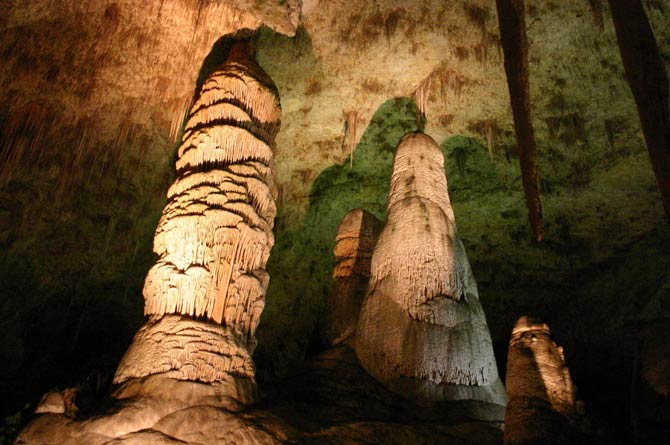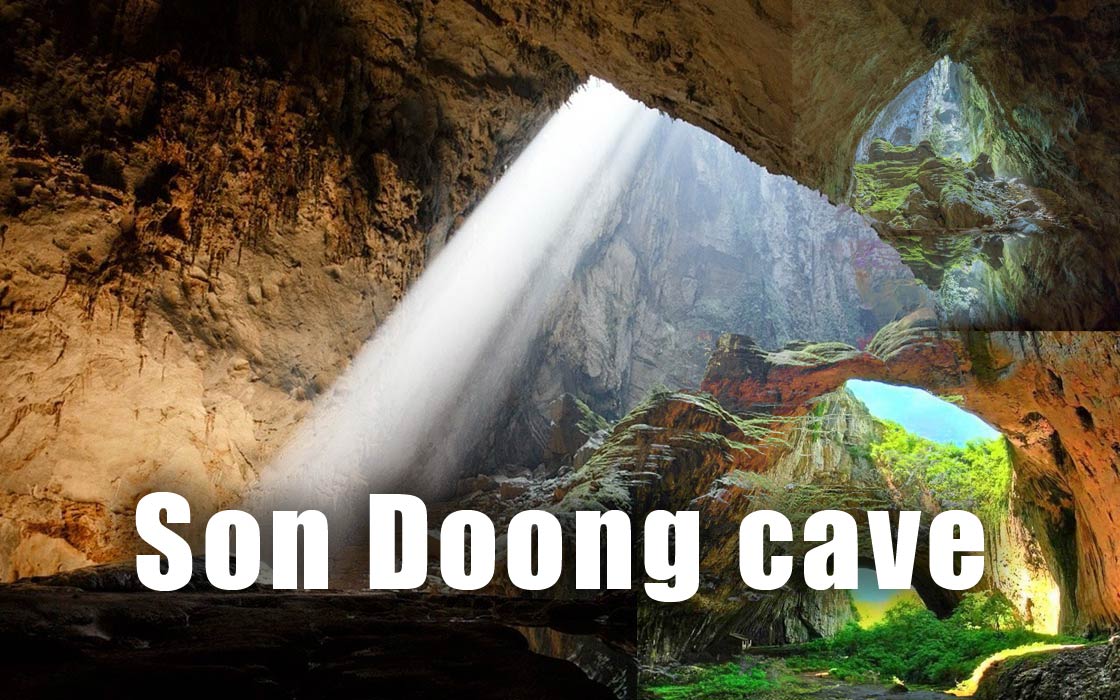Hang Sơn Đoòng cave
There is a place in the Far East that brings to mind images of the world from millions of years ago, where giant ferns overgrow wild rocks of unique shapes. This is Son Doong – the largest cave in the world. Oddly enough, until recently this natural wonder was completely unknown to the world.
Son Doong cave is located in the Phong Nha-Ke Bang National Park in the northern part of Vietnam, approx. 450 km south of Hanoi, close to the Laos border. The park covers an area of 857 km2 (331 mi2), it was established to protect the caves and underground rivers that flow there. Its surface is mainly made of limestone rocks, densely covered with vegetation. This area is extremely difficult to traverse, therefore most of the caves are unexplored; for this reason, no one had heard of Son Doong cave for many years.
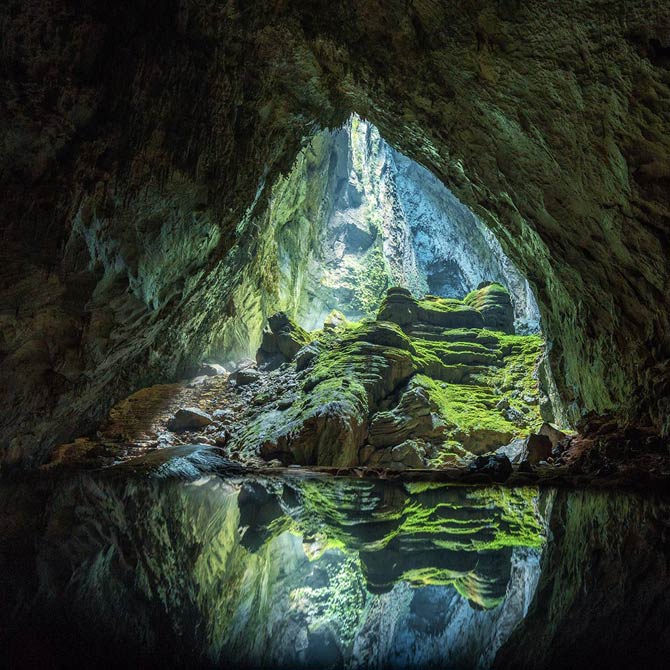
Origin and name
When the Indian subcontinent began to push against Asia 40-50 million years ago, limestone rocks rose in the area of today’s Vietnam-Laos border. About 5 million years ago, rivers gouged rock, and as rainfall is extremely abundant in these areas, the stream of water was also strong, resulting in the formation of unusually large cavities. In places where the rock was weaker, it collapsed, creating giant funnels or holes that could also be used to access the caves.
The cave owes its name to the river. The full Vietnamese name of the cave is Hang Son Doong (Hang Sơn Đoòng) and is a play on words. It means “mountain river cave” because it was hollowed out by the river – the same river that flows there today. At the same time, the name can be translated as “a cave in the mountains near Doong”, as Doong is the name of a village near the entrance.
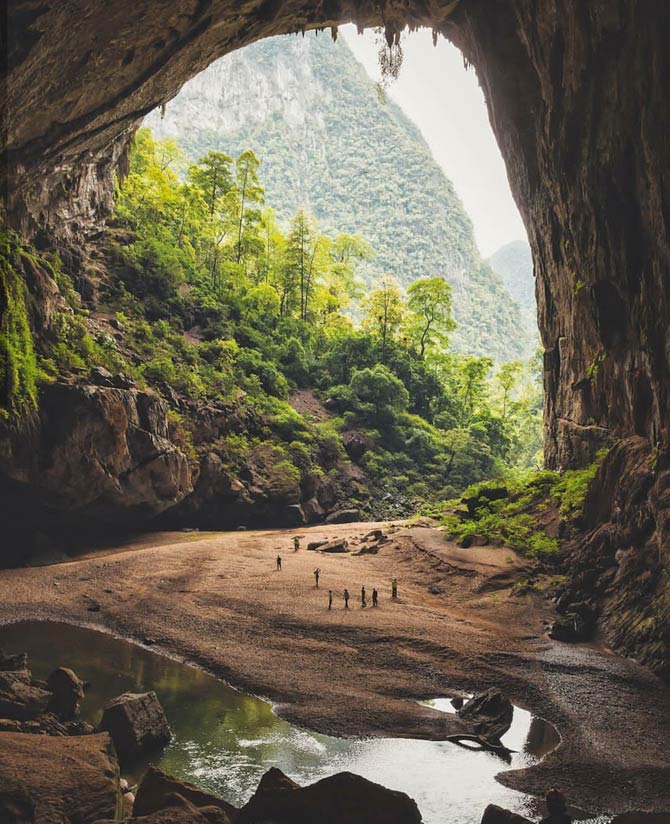
Discovery
Due to the complicated political situation, Vietnam was avoided by tourists and scholars for many years. The situation changed only in the 1990s. Some of the researchers who came to Vietnam were Howard and Deb Limbert, members of the British cave exploration association. They made 13 expeditions, during which they discovered, among others, the longest underground river in the world. In 2009, they met a Vietnamese named Ho Khanh, who – when he found out who he was dealing with – showed them his find.
Ho Khanh (Hồ Khanh)
Ho Khanh (Hồ Khanh) lost his parents as a child in one of the many wars Vietnam waged at the time, and has had to manage on his own ever since. For years he hunted in the forest, hiding from soldiers from different sides of the conflicts. As he grew older, his knowledge of the mountain forests led him to be hired by a dubious company that illegally harvested rare species of trees.
During one of his expeditions, in search of agarwood (agar is used in Ayurveda, Chinese medicine and cosmetology), he heard a strange whistle of wind suggesting that there was a cave nearby. Indeed, he found an entrance to a huge cavern, but without the proper equipment, he did not dare to go down and explore its interior. He did not tell about it until many years later – to the Limberts.

Expedition
On April 10-14, 2009, the expedition with the participation of Ho Khanh and the Limberts went to the cave. When its participants went down to the inside of the cave, their eyes saw huge spaces, which confirmed them in the belief that they had found the largest grots in the world.
The team penetrated 5 km of the cave, but was stopped by a 60 m high limestone wall that was named the Great Vietnamese Wall (the Great Wall of Vietnam). Researchers returned a year later to cross the wall and study it. It turned out that the corridor stretched much further than expected. There was a second exit at the end of it.

Characteristics of the cave
In the end, it turned out that the Son Doong Cave is 9 km (5.6 mi) long. Its most impressive part is a 4 km (2.5 mi) long, 90-150 m (295 – 492 ft) high and 200 m (656 ft) high pit. According to the discoverers’ estimates, the cave has a cubature of 38.4 million m3 from the entrance to the Great Vietnamese Wall, which makes it the largest cave in the world in terms of volume.
In the Son Doong ceiling, there are two karst craters, created by the collapse of part of the vault, one of which is over 100 m (328 ft) in diameter. The edges of the funnels are surrounded by long stalactites.
Sunlight flows into the cave through them, thanks to which life thrives there. The bottom is covered with a tropical forest composed mainly of tree ferns, palm trees and creepers, inhabited by many animals, including birds.
Under the vaults, you can see the rubble caused by the collapse of the ceiling. You can also find the world’s largest stalagmites there, up to 70 m (230 ft) high.
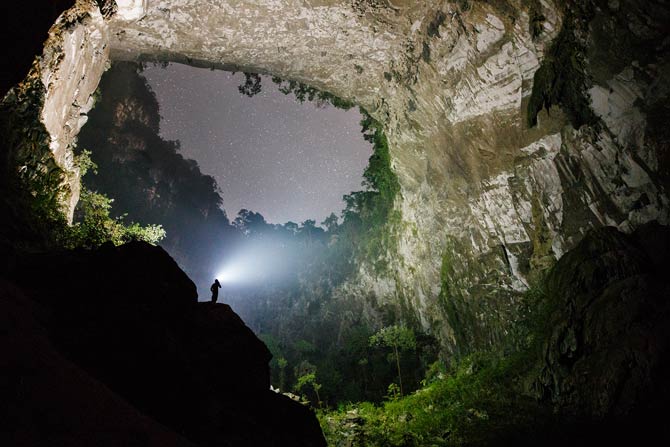
For the record
Stalagmites
Stalagmites grow from the bottom of the cave and can take the form of a cone, tubercle or column. They are created thanks to the water dripping from the top (from the ceiling), from which calcium carbonate precipitates.
Stalactites
Stalactites are the opposite of stalagmites, because they grow from above, that is, hang from the ceiling. They may look like icicles or whole icicle curtains fancifully decorating the interior of the cave. They can form due to the fact that the water hanging from the ceiling is saturated with sediments.
Stalagnates
If, on the other hand, a stalagmite and a stalactite merge into one structure, we are dealing with a stalagnate, i.e. a larger or smaller column. In the case of really large stalagnates, you no longer admire poles, but huge columns.

Behind the Great Wall of Vietnam
Behind the Great Vietnamese Wall is a large corridor where cave pearls have been found. Such a pearl is formed when the water dripping from the ceiling hits the grains of sand lying on the bottom. The grains are coated with calcium carbonate to form limestone spheres. Most often they are the size of a pea, but in Son Doong you can find extremely rare, large pearls even the size of a tennis ball.
One of the longest underground rivers in the world is located in Son Doong Cave. It is also distinguished by the world’s largest cross-sectional area of the corridor – twice as large as the next in the order Deer Cave in Malaysia. In 2019, a team of divers discovered that an underground river flowing through Son Doong meets another cave – Hang Thung. If taken as a whole, the total volume of the cave would be 40 million m3.
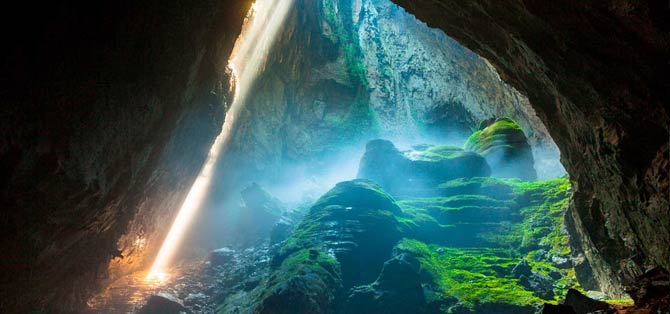
Tourism
Son Doong cave is not the longest or deepest cave on Earth, but it is second to none in terms of volume. In addition, the forest developing at its bottom makes it a view and an impression unheard of in other caves in the world. That is why it met with great interest of tourists, especially speleologists. However, the authorities, on the advice of scientists who wanted to keep it in the best condition, introduced strict restrictions on visiting.
From 2017, Son Doong can only be visited in groups of 10, only under the supervision of a guide and national park rangers. The trip is expensive – the admission price for one person is over 3,000 US dollars.
As the visiting time is quite long (7 days) and the number of people is limited, it is estimated that the maximum number of visitors is 500-800 per year. Oxalis Adventure Tours has exclusive rights to organize cave tours – the company, which also includes its first researcher Howard Limbert.. Part of the income goes to the inhabitants of the surrounding villages, thanks to which their standard of living has increased significantly.
There are plans to build a cable car across the cave to prevent damage to the ground and reduce human impact on the surroundings. However, experts say that such a project would irretrievably destroy the cave environment and harm the plants living there and scare the animals away. Besides, the cave, due to limited tourist traffic, is not an object exposed to destruction.
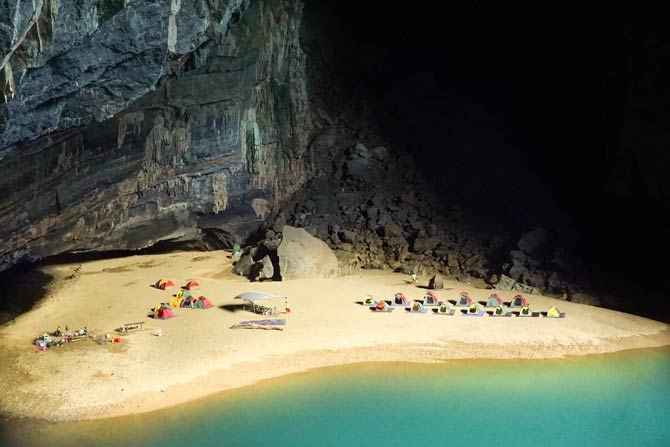
Detailed data / dimensions
Son Doong Cave in numbers
- Length: probably approx. 9 km (5.6 mi)
- Main passage length: 4 km (2.5 mi)
- Width: up to 150 m (492 ft)
- Height: up to 200 m (656 ft)
- Discovery: 1991
- Number of cave entrances: 2
- The largest stalagmites: over 70 meters (230 ft)
- The main passage of the Sơn Đoong cave, by volume, is the largest known cave passage in the world – 38.4 million cubic meters
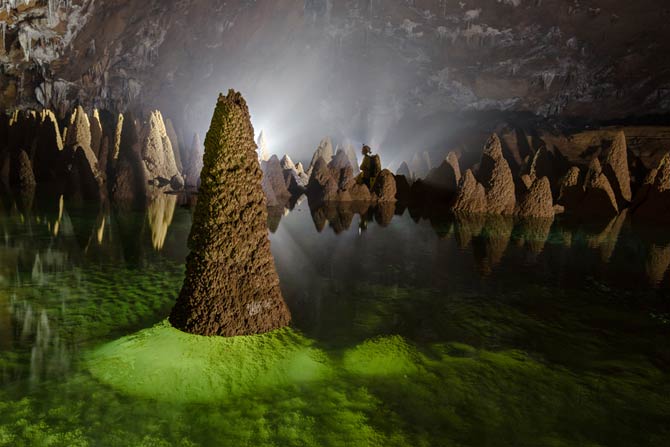
Son Doong Cave – interesting facts
- Ho Khanh claims he found the entrance to the cave as a boy, but forgot where it was and did not return to it until he accidentally stumbled upon it in 1991.
- Son Doon is one of about 150 caves located in the Phong Nha-Ke Bang National Park.
- The interior of the cave is so huge that it could house a skyscraper from New York and a Boeing 747 could fly inside comfortably without endangering the wings.
